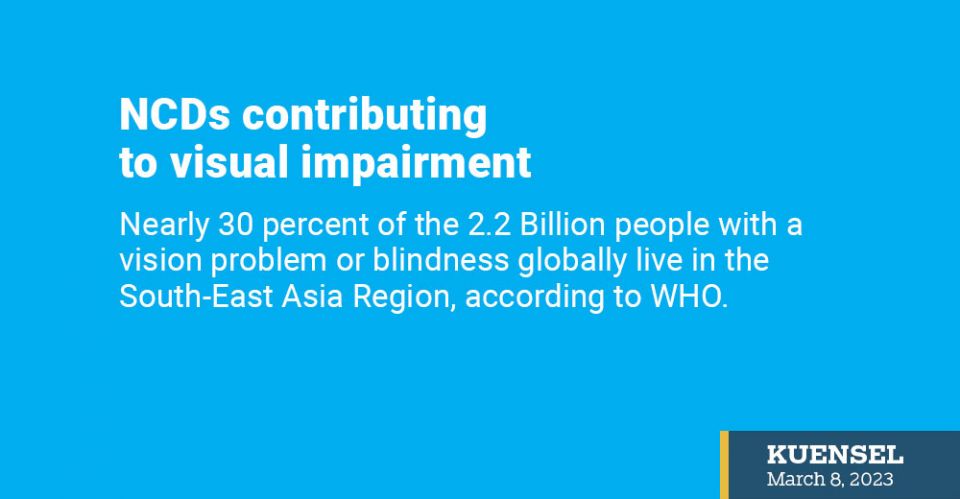
Nearly 30 percent of the 2.2 Billion people with a vision problem or blindness globally live in the South-East Asia Region, according to WHO.
WHO in India last month called for accelerated action to provide quality, affordable, integrated and people-centred comprehensive eye care for everyone to address the increasing burden of vision impairment and blindness in the South East Asia Region.
Regional Director Dr Poonam Khetrapal Singh during the high-level meeting of member countries on ‘Integrated People-Centred Eye Care’ said: “This huge burden is unacceptable, as nearly half the global vision impairment could have been prevented.”
She said that children and older people are most vulnerable but women in rural areas and ethnic minority groups are at greater risk.
She said that the increasing non-communicable diseases like diabetes are causing vision impairment and blindness.
The region is home to 87.6 million people with diabetes—30.6 million had diabetic retinopathy (eye disease caused by high blood sugar) and 9.6 million had sight-threatening retinopathy (blindness caused by untreated diabetic retinopathy), according to WHO.
Health ministers of member countries attended the three-day meeting and the programme managers from member countries of the region deliberated on urgent measures to roll out an “Action plan for integrated people-centred eye care in South-East Asia 2022 – 2030”.












